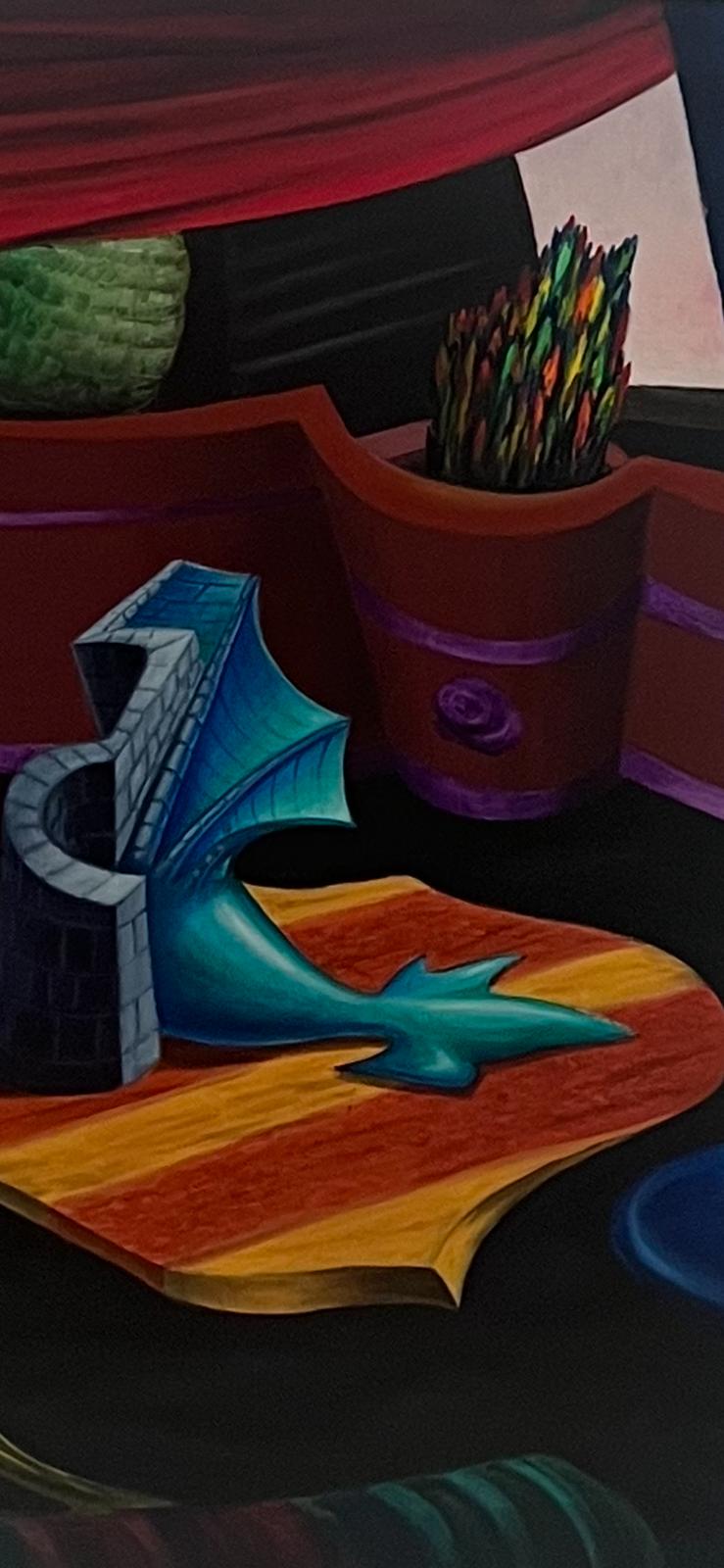The Alchemical House
A global significance as a “total artist” and the urgent need to preserve his house, currently under threat of eviction, as a site of contemporary cultural heritage.
FEATURED ARTIST OF THE WEEK
Charlotte Madeleine Castelli
7/9/20253 min read


Il contenuto del mio post
A Journey into the Hidden Universe of Luigi Serafini
Rome, July 2025.
Crossing the threshold of Luigi Serafini’s home in Rome feels like stepping into a living, breathing organism—mutable, vibrant, and full of pulse. To call it a simple "house" would be a misnomer: it is rather a three-dimensional Codex, a creature that breathes through its walls, vibrates in its details, and feeds on imagination. Nestled discreetly in the Trieste district, this dwelling has, for over thirty years, served as the magnetic core of Serafini’s universe, a point of confluence between matter and the impossible.
The vivid red and white walls, inspired by highway signs from childhood travels, draw the gaze like mnemonic signals. Walking through the space, one feels that every object is an emissary from another dimension: crocodile-shaped carpets made of sunny-side-up eggs, clocks that mark "oceanic time," anthropomorphic sculptures embodying the fusion of plant and human, like the famed carrot-woman, silent witness of an alien yet strangely familiar mythology. Every corner speaks a visual language that does not ask to be translated, but simply to be felt.
Luigi Serafini is internationally recognized as the creator of the Codex Seraphinianus, the imaginary encyclopedia first published in 1981, written in an indecipherable alphabet and illustrated with plates that seem to arise from lucid dreams. But to define him only as the author of the Codex would be reductive. Serafini is a total artist: architect, set designer, visual poet, designer, world-builder. His art does not seek to explain the inexplicable, but to temporarily disable the very need to understand. It is a practice of suspension, a liminal space between what we know and what we can only intuit.
The genesis of the Codex, which began in 1976 in a small attic on Via Sant’Andrea delle Fratte, was an act of creation that engaged body, mind, and dream. Serafini recalls working day and night with a cat on his lap, serving as a medium between worlds, a symbolic conduit through his pineal gland. The Codex, born without a fixed meaning, is not a language to be decoded but a feeling to be inhabited. There are no hidden messages: there is the pure pleasure of the sign, the gesture that evokes and confounds, the emotion stirred by an alphabet of the unknown. And yet, his work has been embraced and studied as a global cultural phenomenon, compared to the Voynich Manuscript, and adored by the likes of Italo Calvino, Umberto Eco, Federico Fellini, Tim Burton, Philippe Starck. Fellini himself sought Serafini’s presence, inviting him to appear in Intervista and commissioning him for a poster of La voce della Luna.
Throughout his nomadic journey, Serafini has traversed both visible and invisible realms. His solo voyage to the United States in 1971, penniless and wandering, left a deep imprint. In those cities—charged with beat poetry and the nascent digital age—he witnessed the intersection of poetry and code, tribalism and machine language. There, he understood the possibility of inventing a new language, one that belonged neither to East nor West, neither to semantics nor to mysticism, but that was instead pure, fluid, asemic. His works have been exhibited in major international museums, yet it is in his domestic atelier that the true source of his vision resides.
And now, this home, this temple of imagination, is at risk: the artist has received an eviction notice, and the building remains unprotected, despite its incalculable value, not only artistically but culturally. Every object, every architectural intervention, every visual fragment within the house forms an integral part of his work. It is as if the Codex itself had taken on physical form and merged with the very fabric of space. As a curator, I feel compelled to make an urgent appeal: Serafini’s house must be recognized and preserved as a site of contemporary cultural heritage, a living museum, an ideas laboratory, a conduit for a language that even today remains unmatched.
I envision not a center that celebrates the past, but one that invents the future. Artist residencies, workshops on asemic writing, dialogues between philosophy and artificial intelligence, immersive exhibitions that connect Serafini’s visions with those of contemporary artists, scientists, poets, and architects. His home could become a bridge between the tangible and the unknowable, a space where dreaming is not an escape, but a radical mode of thinking. A living monument to the power of fantasy.
I walked through those rooms, breathing in the scent of paper and time, observing unpublished drawings, listening to the sound of speaking silences. Through that experience I understood that Serafini does not ask to be interpreted, but to be safeguarded—because his work invites us to suspend logic and enter the pure language of imagination
© Charlotte Madeleine Castelli | All rights reserved
